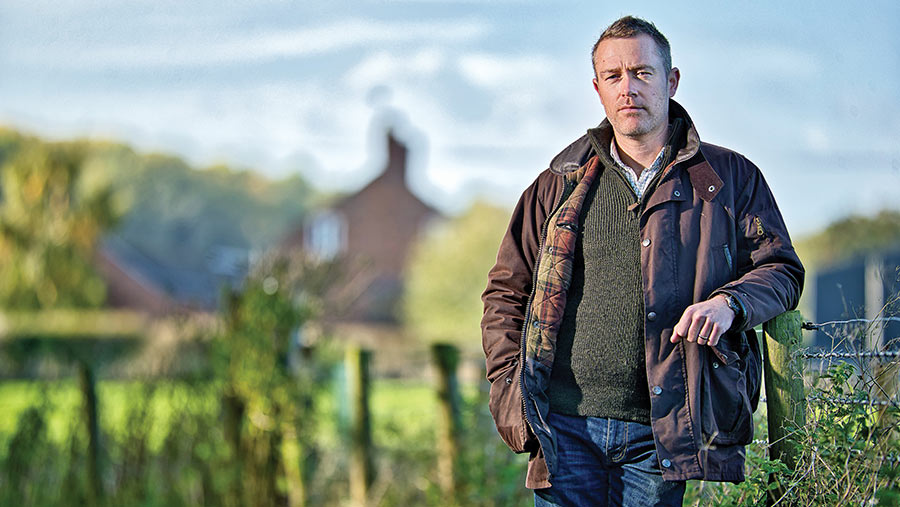Will’s World: Searching for signs of spring on farm
 Will Evans © Richard Stanton
Will Evans © Richard Stanton I’m reading The Lion, The Witch and The Wardrobe with my youngest daughter, and I’m beginning to suspect that the evil White Witch who magically condemns the kingdom of Narnia to an eternal winter has done the same thing to Britain. It certainly feels like it, anyway.
I don’t think we’ve had three dry days in a row for more than five months. I’ve lost count of the floods we’ve had, and our crops look scruffier and more bedraggled than Boris Johnson the morning after a Downing Street lockdown party.
See also: How to tackle hefty spring arable workloads after wet winter
Cashflow is tighter than two coats of paint, and I haven’t felt truly warm since we went on a family holiday to find some sun back in October.
All this, coupled with the current uncertainty around farming policy, as well as the abject horror that we’re witnessing daily on the news and the feeling of helplessness and despair that engenders, has me feeling a bit down.
I’m alright, but certainly not firing on all cylinders – six out of 10, I suppose.
Gwanwyn cometh
As a result, I’m trying to be proactive by finding the time every day, whether early in the morning or late in the evening, for short walks round the farm to search for signs of spring and the uplifting feeling of hope that comes along with it.
The word “spring” never seems sufficiently beautiful to adequately describe the most wondrous of seasons, though. It doesn’t roll off the tongue well enough. It’s a syllable too short. I prefer the Welsh word for it: gwanwyn.
I’m biased, perhaps, but like many Welsh nouns, it seems to me to fit better than the English. It sounds softer, less harsh – more like the season itself. An appropriate word to illustrate a time of rebirth and revival, of leaving darkness behind and re-entering the light.
In the miles of our ancient hedgerows, the buds of hawthorns are bursting forth, with new green leaves soon to appear.
I saw the first of the wild primroses that grow on the banks underneath them last week, and I couldn’t help but smile, despite my melancholy.
I know where they all are on the farm, and I look out for them every March, wondering if, as the Celts believed, a patch of them signifies a gateway to the realm of the fairies. I tell my daughters it’s true, anyway.
Many happy returns
Along the riverbank the wild garlic is starting to tentatively reappear and will soon cover the stretch that runs alongside our lane with its star-like white flowers.
After a warm April shower, you can smell it from the farmyard; the aroma of home.
Migrant birds are starting to return, and I heard a chiffchaff yesterday, joyfully singing its name from the top of a silver birch. On a recent rare sunny day, I glimpsed my first hare of the year, too, loping cautiously across a grass field.
The sight always makes me feel, if only briefly, that everything’s well with the world.
We’re blessed to have lots of them here, and I’ve often seen them stand up and box, gracefully but savagely, like middleweights.
This longest of winters, with its frigid darkness, multiple storms and constant downpours, has left the countryside in its battered and well-worn work clothes, tired, lacklustre and downcast.
But spring – gwanwyn – is on its way and will soon see it dressed up again in all its finery, energised and ready for an occasion.
Light, colour and hope are all finally returning – you just need to know where to look for them.

